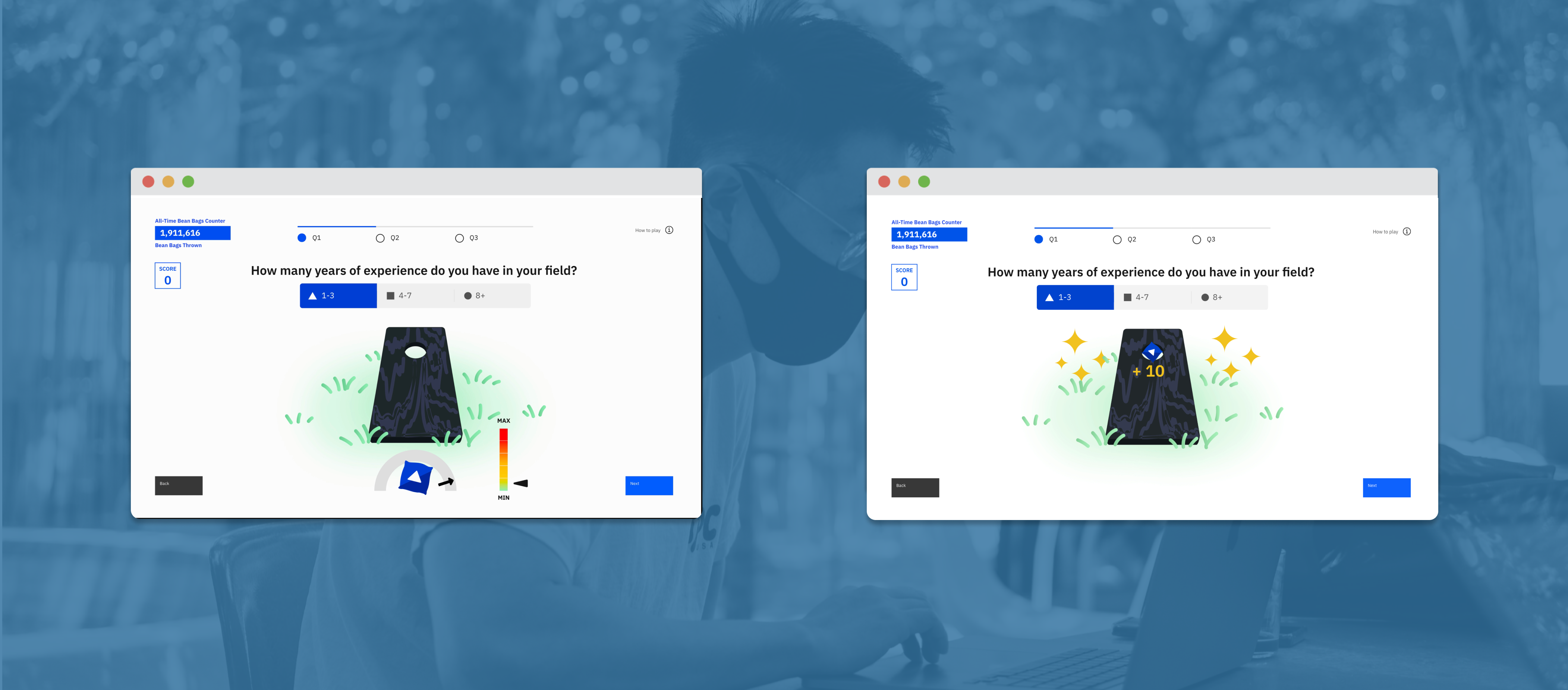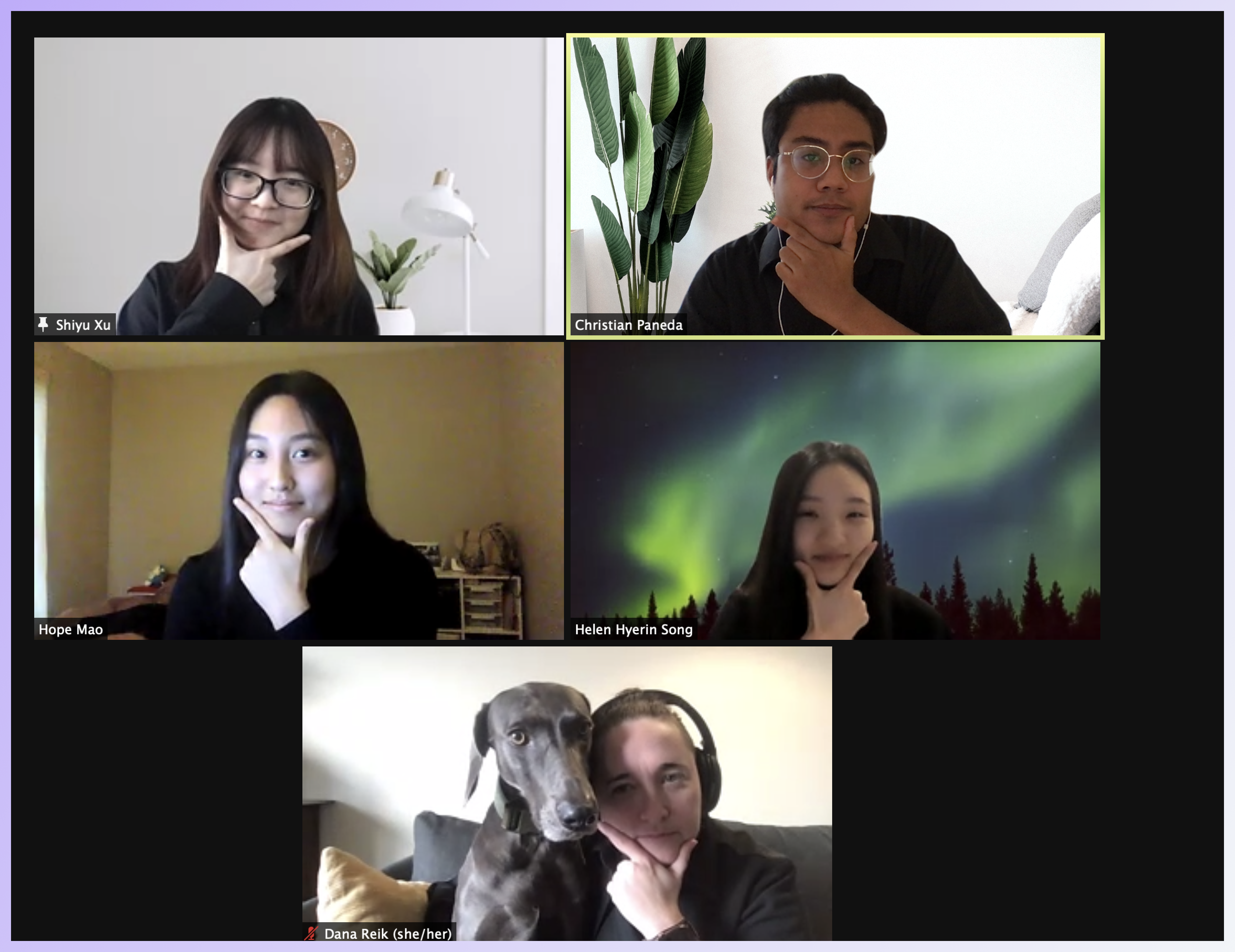
IBM, Designing Virtual Conference Activities
Engaging and immersive data gathering experiences in a virtual and remote era
Role
Designer and Product Manager
Timeline
Fall 2020 (12 weeks)
Skills
- Product thinking
- Product management
- User research
- Interaction design
Tools
- Figma
- Miro
- Mural
- Adobe XD
- IBM Design System
Overview
I managed and designed with a team of four fellow student volunteers to collaborate with IBM. We designed a virtual gamified conference experience to be used at future IBM events. Our team conducted user research, and I led weekly iterative brainstorming sessions to deliver an animated prototype.
Our final design is a web-based desktop virtual activity that is a gamified question and answer activity. It also includes features for social connection. At the time, IBM designers and data scientists indicated that they would be in internal discussion to deploy our designs.
Request Access
I can’t publicly share a lot of the details of the project. For more information, please email me at ccpaneda@umich.edu.
My Experience
What did we do for Design Clinic and IBM?
Design Clinic is a program within the University of Michigan School of Information (UMSI) where companies work with volunteer students to address design challenges.
My team and I were selected to collaborate with IBM to design a digital activity for virtual conference attendees to submit information about their user needs in an engaging way. I was both the product manager and a UX designer on the team. My team and I are student volunteers of the Design Clinic. We are not employees of IBM.

Ultimately, my team’s final design was positively received by the designers and researchers at IBM we collaborated with, and our digital activity will be used for future IBM events. My team’s efforts were also personally recognized by the dean of UMSI.
Deliverables
What did I deliver at Intuit?
- Competitive analysis to gain key insights about existing large-scale virtual conferences and areas for innovation
- User interviews with UX Researchers, UX Designers, and conference attendees to inform our design decisions
- Personas to summarize key user insights
- Storyboarding to illustrate user flows and how the product might fit in a conference attendee’s schedule
- Low-fidelity wireframes to iterate solutions
- High-fidelity prototype and design spec for final hand-off
Reflections
What did I learn?
Key Learnings
⚡️ Collaboration is a rapid and iterative process
As a product manager and design on the team, I learned how to drive brainstorming conversations among members and create an encouraging environment to bring an array of insights that were narrowed in to create a unified vision.
⚖️ Recognize the balance of business goals and user needs
From working with a large tech company, we learned the importance of thinking about not only how the product might serve users but also how it is an important tool to drive success for a business. This allowed us to create a more complex product through a holistic design process. We are designing in context, not a vacuum.
😎 Embrace ambiguity with courage
We were given a lot of freedom to take the project in many directions. While we appreciated the powerful sense of independence, we were also challenged with creating a strong vision. We had to be realistic with our project timeline and critically think through technical constraints and design assumptions. Our final product starts a conversation and is not the end.